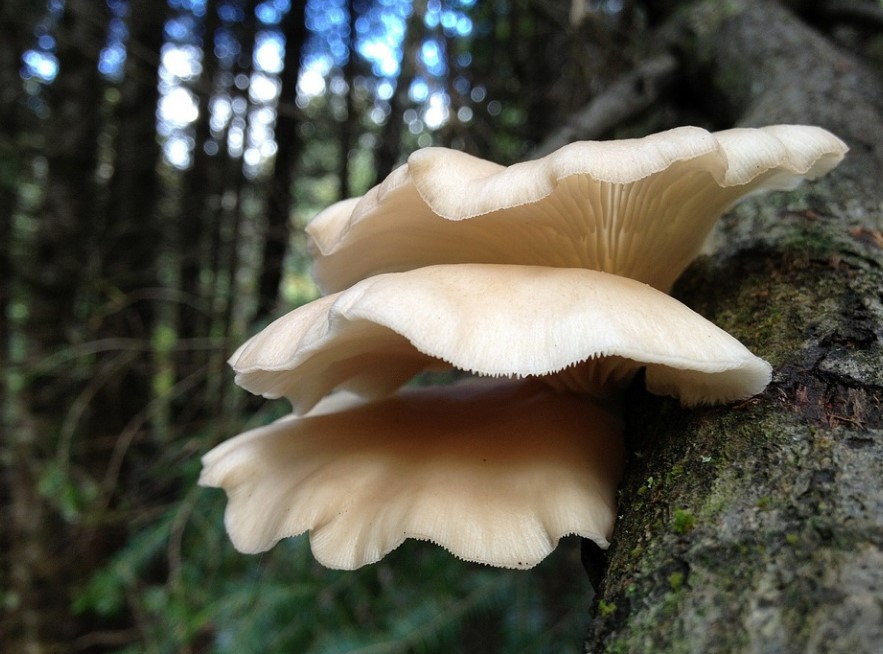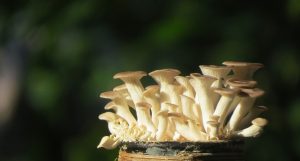
Last Updated on July 31, 2023 by Edible Alchemy Foods
If you are a food enthusiast, you might have heard about the abalone mushroom and oyster mushroom, two of the most popular and widely used mushrooms in the culinary world. While both are delicious and have a unique taste and texture, they are not the same.
In this article, we will provide a comprehensive guide on the differences between the abalone mushroom and the oyster mushroom.
- Appearance: The abalone mushroom (Pleurotus abalone) is a species of oyster mushroom that has a unique appearance. It is smaller in size than the oyster mushroom and has a flatter cap with a wavy, fan-like edge. The abalone mushroom has a beige to brownish-gray color with a smooth surface, while the oyster mushroom (Pleurotus ostreatus) has a more distinct cap that resembles the shape of an oyster, with a light to dark gray or brown color and a slightly wrinkled surface.
- Taste and Texture: The abalone mushroom has a mild, buttery flavor that is similar to its namesake shellfish. Its texture is silky and tender, making it an excellent addition to soups, stews, and stir-fries. On the other hand, the oyster mushroom has a slightly sweet and delicate flavor with a chewy texture, making it a versatile ingredient that can be used in various dishes, from salads to pizzas.
- Culinary Uses: Both the abalone mushroom and oyster mushroom are widely used in Asian cuisine, especially in Chinese and Japanese dishes. However, they have different culinary applications due to their unique taste and texture. Abalone mushrooms are commonly used in soups, stews, and stir-fries, while oyster mushrooms are often sautéed or grilled and used as a topping for pizzas or added to salads.
- Nutritional Value: Both abalone and oyster mushrooms are low in calories and fat but high in protein, fiber, and essential nutrients such as vitamins B and D. They are also rich in antioxidants that help fight inflammation and boost the immune system.
- Cultivation and Availability: Abalone mushrooms are less commonly cultivated and harvested compared to oyster mushrooms, which are widely available in most grocery stores and markets. Abalone mushrooms can be grown indoors or outdoors and require specific growing conditions, including a cooler temperature and high humidity. Oyster mushrooms, on the other hand, are more adaptable to different growing environments and can be grown in a variety of substrates, including straw, sawdust, and coffee grounds.
What mushroom is closest to oyster mushroom?
oyster mushroom has a few substitutes that are similar in texture and taste. One such mushroom is the King Oyster Mushroom, which has a meaty texture and can be used in place of oyster mushrooms in most dishes. Another similar mushroom is the Lion’s Mane Mushroom, which has a similar texture and can be cooked in many of the same ways as oyster mushrooms. The oyster mushroom itself has a distinctive shape with a broad, oyster- or fan-shaped cap that is two to ten inches across, with firm white flesh and white gills that are decurrent. Oyster mushrooms are also easy to find while foraging and relatively easy to grow.
What mushroom is closest to abalone mushroom?
abalone mushroom is often confused with the pearl oyster mushroom, as both have an ivory-colored appearance and are closely related to the oyster mushroom. The abalone mushroom is also known by other names such as White Elf, King mushroom, and Akuratake mushroom, and is native to China, although commercial cultivation started in Hungary and expanded worldwide. The king trumpet mushroom, also known as the French horn mushroom, is a separate variety of mushroom that is sometimes confused with the abalone mushroom but is actually native to Mediterranean regions of Europe, the Middle East, and North Africa.
Also, read:
- Difference Between Lentinellus Ursinus and Oyster Mushroom
- Difference Between Angel Wing And Oyster Mushrooms
- Difference Between Shiitake Mushroom vs Cremini
- Are Oyster Mushrooms Supposed to Be Fuzzy?
Conclusion
While the abalone mushroom and oyster mushroom are both delicious and nutritious, they have distinct differences in appearance, taste, texture, culinary uses, and availability. Understanding these differences can help you choose the right mushroom for your dish and elevate your culinary experience.
Whether you prefer the silky texture and mild flavor of the abalone mushroom or the chewy texture and delicate taste of the oyster mushroom, both mushrooms are an excellent addition to any dish.











